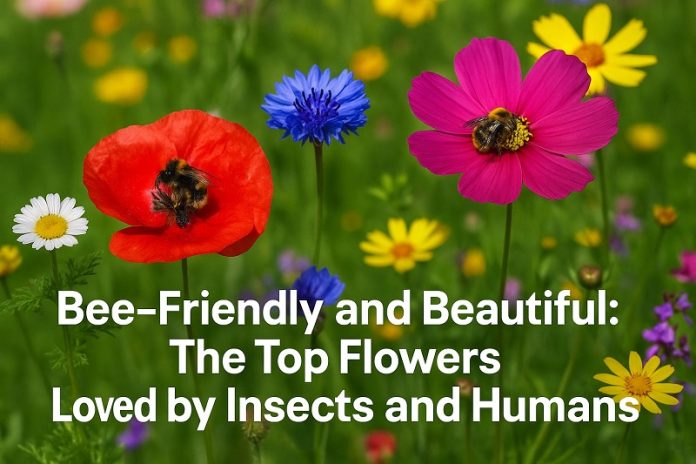
Across the globe, bees and other important pollinators are in trouble.
Their numbers are declining, and that’s bad news for ecosystems and the food we rely on.
In response, many people are planting flower strips in gardens, parks, and city spaces to help. But which flowers do bees actually like best—and which ones will people enjoy too?
To find out, botanists from the Natural History Museum of Denmark at the University of Copenhagen teamed up with scientists from the National Botanic Garden of Wales.
Together, they decided to move beyond guesswork and take a scientific approach to identifying which flowers are truly the best for pollinators.
“Most of what we know has been based on personal experience or tradition,” says professor Natasha de Vere, a botanist leading the research. “But we wanted clear, evidence-based guidance on what really works for pollinators.”
The researchers reviewed over 400 scientific studies on flowers and insect pollinators, including bees and hoverflies.
They then evaluated how well different commercial flower seed mixtures performed in real life—looking at how many pollinators visited the flowers and how appealing they were to people.
The results revealed that flower mixes combining native and non-native species were the most successful. These blends were better at taking root, bloomed for longer periods, attracted more insects, and were also more visually pleasing to humans.
Some of the top-performing flowers in the study included yarrow, cornflower, common poppy, garden cosmos, corn marigold, and Moroccan toadflax. These blooms are not only popular with pollinators, but they also create colorful and attractive gardens for people to enjoy.
The researchers emphasized the importance of beauty in their findings because it influences what people choose to plant. When flowers are both good for bees and lovely to look at, more people are likely to include them in gardens and green spaces.
According to de Vere, planting even a small area with pollinator-friendly flowers can have a big impact. “I only have a small backyard,” she says, “but I’ve filled it with plants that are great for bees and hoverflies—and now it’s buzzing with life.”
She adds that gardens and urban areas can play a vital role in supporting pollinators, and that everyone—from homeowners to city planners—can help. Her hope is that this research will guide people in choosing flower species that not only look beautiful, but also support biodiversity.
With the right plants, even a tiny patch of soil can become a haven for pollinators—and a joyful space for people too.



